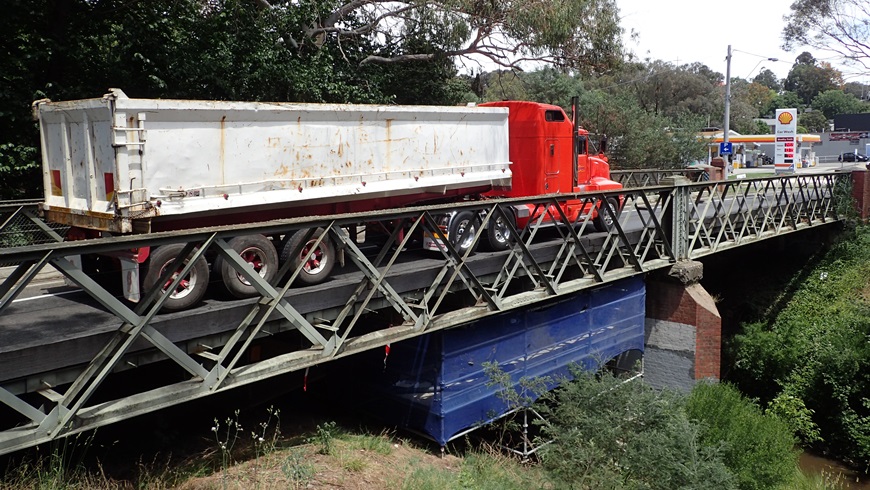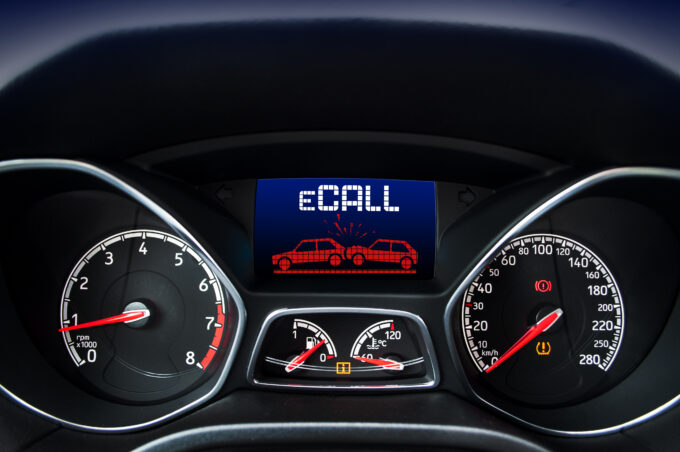Support corset for historic steel bridges
An Empa team is saving old iron bridges from the 19th century from decay. Carbon fiber patches reinforce the crumbling structures. A railroad bridge in Switzerland and a road bridge in Australia have already been successfully reinforced. Many historic bridges could follow.

Preserving instead of throwing away - this applies not only to Art Nouveau villas, pre-war sports cars or Hammond organs from the 1950s; preserving instead of scrapping is also a good idea for old railroad or road bridges. These industrial monuments, often conceived and calculated by 19th-century steel engineers, rust away quietly or crunch noisily under modern intercity trains and heavy semitrailer trucks.
The good news: They can be saved. A support corset made of CFRP (carbon fiber-reinforced plastic), reversibly fixed to the bridge in compliance with the preservation order, strengthens the resilience of the old structures, makes them safe and allows them to survive their daily lives longer and better.
Gentle method for strong structures
Masoud Motavalli and Elyas Ghafoori have already shored up two old bridges using this "gentle" method: the Münchenstein railroad bridge near Basel, built in 1892, and the Diamond Creek road bridge in Australia, built in 1896. If their system catches on worldwide, there would be plenty to do: In Europe, around 30 percent of all bridges are more than 100 years old. The situation is very similar in the USA, Australia and Japan. Road authorities and railroad companies worldwide are looking for methods to keep these structures alive. Empa may hold the key. The research partner is Alain Nussbaumer, who works at the EPFL researches on fatigue and fracture mechanics of steel structures. Nussbaumer also supervises the dissertations written in the course of these research projects at the Empa run.
CFRP is ideal for reinforcing structures: it is corrosion resistant and does not show material fatigue, besides it is light and does not burden the structure with additional weight as a steel reinforcement would do.
An anchor instead of glue
Unlike wood or concrete, however, where you can simply glue on the CFRP reinforcement, fixing it to old steel girders is much more complicated. Often the bridge girders are rusty or painted over with thick layers of paint. Sometimes rivets in the steel girders prevent the CFRP patches from sticking flat. Ghafoori gets around these problems by not bonding CFRP directly to the bridge, but instead attaching the panels to the bridge with anchors. This saves blank grinding of large areas. An added bonus is that the bridge does not have to be closed to traffic while the CFRP strip is being installed. There is also no need to wrap the bridge in foil - this is often necessary when old bridges cross rivers and no paint splinters containing heavy metals are allowed to enter the water.
The anchors Ghafoori uses to attach his CFRP patches are not easy to replicate. "It is crucial that the carbon fibers do not break when the CFRP is clamped in place," says Ghafoori. He has been working on this technique at Empa for more than a decade, using the heavy hydraulic presses in the construction hall for his experiments. The office where he writes his publications is located directly above. "The beginning was not easy," the researcher recalls. "When I tested the first anchors in a tensile test in 2009 as part of my master's thesis, they fell off overnight. That didn't exactly earn me respect from my colleagues. I was even banned from visiting the lab for a few days; my work was considered too dangerous."
In the meantime, the anchoring system developed at Empa is protected by a patent and has long since passed its test: Since 2015, the Münchenstein Bridge has been reinforced with the prestressed CFRP patches. Every day, several dozen passenger and freight trains roll over the historic steel structure. A long-term monitoring system consisting of a wireless sensor network measures the load and movements of the bridge components and delivers the data to Empa in real time.
Equipped for all eventualities
The project, which was also part of Ghafoori's dissertation, quickly became known among experts. In January 2018, a very similar bridge in Australia was strengthened with the CFRP system: the 122-year-old Diamond Creek Bridge near Melbourne. "We've learned a lot since Münchenstein," Ghafoori emphasizes. For example, the researchers were able to improve the shape of the anchorages and make the whole structure flatter. This is important because trucks pass under many bridges. If the bracing were to protrude too far downward, particularly high trailers could collide with the new technology. The team also took into account the temperature fluctuations between summer and winter: Measurements on the Münchenstein bridge had shown that the CFRP stiffening of the bridge works much better on hot summer days than in winter. The reason: In the summer heat, the steel bridge expands, but the length of the CFRP reinforcement remains almost the same. Thus, the bridge is pulled together more by its supporting corset in summer than in winter.
The Diamond Creek Bridge, reinforced in January 2018, also wears sensors and will provide online load data to Empa for at least a year and a half. To see if the stiffening was having an effect, the researchers had a 42-ton semi-truck roll over the bridge before and after attaching the CFRP strips. "The initial data shows that the forces acting on the bridge are reduced by half," Ghafoori says. "That could, conservatively estimated, result in doubling its remaining life."
Making bridges fit for the future
In the meantime, Ghafoori and Motavalli are receiving more and more visits from abroad. The French Transport Research Institute, the French Center for Mobility and a Chinese delegation have announced their presence, and a US delegation has also already visited Empa. The method can be used worldwide without much effort. "For Australia, we pre-assembled the brackets with the CFRP strips at Empa, tested them and then simply sent them to the construction site by parcel post," says Ghafoori. "We just had to fly there later and assemble everything on site."
Of course, the researchers do not want to stop at the current state of knowledge. After reinforcing straight steel girders, the X-shaped connecting pieces between the girders are now also to be reinforced. There, at the weld seams and connection joints, rust particularly likes to bloom and fatigue cracks show up that can make the bridge unstable. A newly developed CFRP strip system could soon solve the problem. With this kind of support, many 19th-century steel bridges could be future-proofed - and thus ultimately outlive their younger siblings made of reinforced concrete by a considerable margin.









